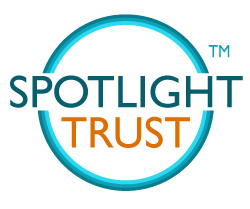
Photo by Mitchell Yuo on Unsplash
We’re becoming ever more connected and collaborative in the workplace. In data collected over the last two decades, Rob Cross, Reb Rebele, and Adam Grant found that “the time spent by managers and employees in collaborative activities has ballooned by 50 percent or more.” At many organizations, employees can spend as much as 80 percent of their day communicating with others.
While many leaders will rank collaboration as one of the most critical factors to successfully achieving their business goals, many organizations and teams struggle to collaborate effectively. And with many organizations making more of a conscious effort to foster diverse and inclusive cultures, effective collaboration can be a super power to maximize the breadth of perspectives, skills, and insights needed to enable groups to do their best work and deliver better results.
Effective collaboration is a human endeavor
With a mind to boost collaboration, more and more organizations are investing in a range of collaborative technology, and there are some incredible options on the market. Technology, though, at best fails to deal with the underlying problems that inhibit collaboration in the first place, and at worst becomes a source of information overload that undermines effective collaboration.
The key to collaboration doesn’t lie in technology; it’s in people and thoughtful processes that make the most of our humanity. To build a truly collaborative culture is understanding human behavior and how different types of people work together. By harnessing those insights, technology can certainly be a complementary tool to better support an effective collaborative culture.
So what does effective collaboration look like?
Take a closer look at struggling collaborations and you’ll likely notice that they’re not collaborations, but a collection of people working adjacently. These groups are missing the core elements of togetherness that create the 1 + 1 = 3 collaborative connections where the whole is much greater than the sum of its parts.
So what are some signs of effective collaboration?
- There is clarity and alignment on a shared purpose and the collaborative goals
- There is clarity on one another’s collaborative commitments and contributions
- Trust is high — both among collaborators and in the collaborative process
- Everyone feels a high sense of psychological safety
- Everyone is included, feels like they belong, and that their perspectives and contributions are valued
- Collaborators make and honor their commitments to one another — everyone is accountable
- Meetings are meaningful
- Collaborators listen to and empathize with one another
- Feedback is candid and generous and collaborators are open to receiving it
- Collaborators approach challenges with a growth mindset
- Collaborators accept, acknowledge, and build on one another’s contributions (“Yes, and…”)
- Collaborators are recognized and celebrated for their own strengths
- Collaborators take care of one another and treat each other with respect
- There isn’t a feeling of elephants in the room or walking on eggshells
- There is a sense of possibility
- Togetherness feels like a performance boost, not a barrier
- Interactions feel energizing
- Oftentimes, it’s fun!
Look for and Amplify the Collaboration Signs Around You
“Collaboration is the foundation of the standard of living we enjoy today. Trust is the glue.” – Ram Charan
As you connect with your colleagues throughout your typical week, do you feel like you are effectively collaborating or more like you are working adjacently? What collaboration signs are you seeing? What are one or two you would like to see more of? How might you bring them forward so that your team can more readily experience collaboration as a shared super power to accelerate towards your organizational goals?
PS – Want to boost your collaboration skills? Then register for our free virtual workshops. You’ll walk away with practical, Trust-Centered™ skills you can put into practice right away to help your team thrive.


Yes, and: Use These Two Words to Build Trust | The Brightspot Trust | Trust-Centered Leadership
[…] and I’m going to work with, not against, you. And I’m going to share power with you so we can collaborate effectively. And I’m going to embrace possibility and co-create with […]